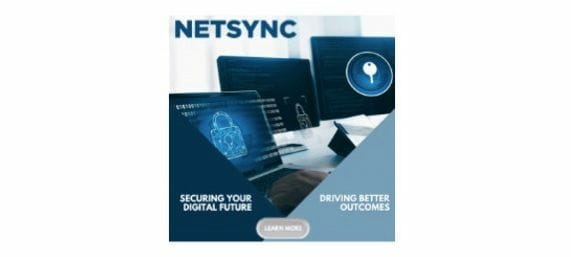

Image Via new model: GPT-4o: Analyst monitoring cyber war
Welcome to another edition of the Cybervizer Newsletter.
We are a 10K+ Strong Community, and our goal is not just to keep you updated with the latest AI, cybersecurity and other crucial tech trends and breakthroughs that may matter to you, but also to feed your curiosity.
Thanks for being part of our fantastic community!
In this edition:
Did You Know
Generative AI news & Bytes
Cybersecurity News & Bytes
AI Ethics News & Bytes
Power Prompt
Solution Spotlight
Social Media Images
Did You Know
Did you know Reducing Dwell Time: Attacks can lurk on enterprise networks for an average of almost 7 months. AI-driven cybersecurity tools aim to reduce this “dwell time” by swiftly detecting and responding to threats.
Did you know Generative AI techniques, such as Generative Adversarial Networks (GANs), can create synthetic data. This synthetic data serves as a valuable resource for training machine learning models. By generating diverse examples, generative AI helps improve model accuracy and robustness.
Did you know As AI becomes more pervasive, ethical considerations are crucial. Did you know that researchers are actively developing AI systems that can explain their decisions? Transparency and fairness are essential for responsible AI adoption.
Generative AI News & Bytes 🧠

Image Credit: OpenAI
OpenAI Debuts New Model With Enhanced Real-time Voice Abilities (<1 minute read)
OpenAI has announced a new flagship model, GPT-4o, that enhances its real-time voice interactions and brings more powerful capabilities to all its customers. This model, which is a significant step forward in terms of ease of use and speed, is expected to hold OpenAI’s lead in the generative-AI based future1. The new chatbot, working simultaneously across languages, showcases ChatGPT’s multimodal capabilities across visual, audio, and text interactions.
GPT-4o, the “Omni” model, is designed to reason across voice, text, and vision, improving the experience in OpenAI’s AI-powered chatbot, ChatGPT.
The model delivers real-time responsiveness and can even pick up on nuances in a user’s voice, generating voices in a range of different emotive styles.
The OpenAI team demonstrated a live real-time translation from Italian to English and back.
OpenAI is also releasing a desktop version of ChatGPT, initially for Mac users, with a Windows version in the works. Free users will begin having access to custom GPTs and its GPT store
Read more the new OpenAI model.
Cybersecurity & AI News & Bytes 🛡️

Image Credit: Unsplash
Growing concern that artificial intelligence could pose new cybersecurity threats (<1 minute read)
In the ever-evolving landscape of cybersecurity, generative AI emerges as a double-edged sword. While it empowers security teams with predictive insights and efficient search capabilities, it also poses risks. Hackers exploit generative AI to launch increasingly sophisticated attacks, including self-evolving malware. As organizations embrace this technology, balancing its benefits with robust risk management becomes crucial.
Predictive Insights: Generative AI provides security teams with predictive capabilities, allowing them to anticipate potential threats and vulnerabilities. By analyzing patterns and anomalies, organizations can proactively address security gaps.
Risks and Sophisticated Attacks: While generative AI enhances security, it also introduces risks. Hackers leverage this technology to create self-evolving malware and launch increasingly sophisticated cyberattacks. Organizations must stay vigilant and implement robust risk management strategies.
Balancing Benefits and Risks: As organizations adopt generative AI, finding the right balance between its benefits and potential risks becomes critical. Effective risk assessment, continuous monitoring, and adaptive security measures are essential for maintaining cybersecurity resilience.
AI Ethics News & Bytes 🤖

Image Credit: Block Telegraph
Data Privacy in the Age of AI: 8 Ethical Considerations (<1 minute read)
📰 In the ever-evolving landscape of cybersecurity, generative AI emerges as a double-edged sword. While it empowers security teams with predictive insights and efficient search capabilities, it also poses risks. Hackers exploit generative AI to launch increasingly sophisticated attacks, including self-evolving malware. As organizations embrace this technology, balancing its benefits with robust risk management becomes crucial.
Key Points:
Predictive Insights: Generative AI provides security teams with predictive capabilities, allowing them to anticipate potential threats and vulnerabilities. By analyzing patterns and anomalies, organizations can proactively address security gaps.
Risks and Sophisticated Attacks: While generative AI enhances security, it also introduces risks. Hackers leverage this technology to create self-evolving malware and launch increasingly sophisticated cyberattacks. Organizations must stay vigilant and implement robust risk management strategies.
Balancing Benefits and Risks: As organizations adopt generative AI, finding the right balance between its benefits and potential risks becomes critical. Effective risk assessment, continuous monitoring, and adaptive security measures are essential for maintaining cybersecurity resilience.
Learn How AI Impacts Strategy with MIT
As AI technology continues to advance, businesses are facing new challenges and opportunities across the board. Stay ahead of the curve by understanding how AI can impact your business strategy.
In the MIT Artificial Intelligence: Implications for Business Strategy online short course you’ll gain:
Practical knowledge and a foundational understanding of AI's current state
The ability to identify and leverage AI opportunities for organizational growth
A focus on the managerial rather than technical aspects of AI to prepare you for strategic decision making
AI Power Prompt
Governance, Risk, and Compliance Policies - This prompt provides guidance on creating GRC, data protection and privacy policies in accordance with applicable regulations, like as GDPR or CCPA:
Act as a cybersecurity expert specializing in Governance, Risk, and Compliance (GRC). Given the following context, criteria, and instructions, provide guidance on drafting data protection and privacy policies in accordance with applicable regulations, such as GDPR or CCPA.
## Context
The organization is required to draft data protection and privacy policies to ensure compliance with regulations such as GDPR (General Data Protection Regulation) and CCPA (California Consumer Privacy Act). These policies are essential for safeguarding the privacy of individuals and maintaining the security of sensitive data.
## Approach
The approach involves understanding the specific requirements of GDPR and CCPA, assessing the organization's data handling practices, and aligning the policies with the principles and obligations outlined in these regulations. It also includes identifying the types of personal data collected, the purposes for which it is processed, the legal bases for processing, and the data subject rights that must be respected.
## Response Format
The response should include a set of comprehensive data protection and privacy policies that cover the necessary aspects such as data collection, processing, storage, transfer, and deletion in compliance with GDPR and CCPA. It should also outline the procedures for responding to data subject requests, reporting data breaches, conducting privacy impact assessments, and appointing a Data Protection Officer, if required.
## Instructions
1. Familiarize yourself with the requirements and provisions of GDPR and CCPA to ensure accurate policy drafting.
2. Conduct an assessment of the organization's data processing activities, including the categories of personal data stored and processed.
3. Ensure that the policies clearly define the legal bases for processing personal data and incorporate mechanisms for obtaining consent where necessary.
4. Provide guidelines for data retention and deletion and specify the security measures to be implemented in accordance with the regulations.
5. Include procedures for handling data subject requests, breach notifications, and compliance monitoring. Ensure that the policies are readily accessible to data subjects and other relevant stakeholders.
Note: Any words in [Word] in brackets like that is a variable that you insert or add. Here is the format to add variable after the prompt: [Word] = Your answer for variable
Solution Spotlight

Image Credit: Palo Alto Networks
Palo Alto Cortex XDR
In today’s dynamic threat landscape, organizations face increasingly sophisticated attacks that target endpoints. Traditional security solutions often fall short, leaving blind spots and gaps that adversaries exploit. Enter Palo Alto Cortex XDR, a potentially game-changing technology that combines artificial intelligence, behavioral analytics, and cloud-based analysis to revolutionize endpoint security. In this summary, we’ll delve into the capabilities and benefits of Cortex XDR, empowering CIOs, CISOs, and Cybersecurity & AI Enthusiasts to safeguard their digital assets effectively. capabilities and benefits of Palo Alto Cortex XDR:
Unified Endpoint Security:
Behavioral Threat Protection: Cortex XDR employs behavioral analytics to detect and prevent threats. It profiles user behavior and identifies anomalies indicative of attacks.
Comprehensive Stack: The lightweight agent provides complete endpoint protection, blocking advanced malware, exploits, and fileless attacks.
Advanced Detection and Investigation:
Machine Learning: Cortex XDR’s patented machine learning algorithms detect evasive threats. It analyzes data to reveal root causes, speeding up investigations.
Incident Management: Swiftly investigate and respond to incidents with a complete view of each attack.
Adaptive Defenses:
Network, Endpoint, and Cloud Integration: Cortex XDR integrates data across network, endpoint, and cloud environments. This holistic approach enhances attack prevention, detection, and response.
eXtended Threat Hunting (XTH) Data Module: Provides advanced threat hunting capabilities, empowering security operations (SecOps) teams to proactively prevent and detect threats.
Coverage Beyond Traditional Threats:
Identity Threats: Cortex XDR covers compromised accounts and insider threats, ensuring protection without hindering business operations.
In summary, Palo Alto’s Cortex XDR is a powerful solution for CIOs, CISOs, and Cybersecurity & AI Enthusiasts. It adapts to the evolving threat landscape, safeguarding endpoints and simplifying security operations. 🛡️🔍🚀
Read more about Cortex.
DIGITAL OUTCOMES THAT CONNECT YOU
Netsync focus on relationships and works in close collaboration with you to carefully assess your business priorities then collaborate with you to determine and implement the best solutions and technologies for you.
Did you enjoy today's newsletter?
Hit reply and say hello - I'd love to hear from you!
Did someone forward this email to you? Awesome! You can sign up here and not miss an issue of The Cybervizer curated newsletter from Top 5 Global Thought Leader for AI and Cybersecurity Mark Lynd.
Questions, Suggestions & Sponsorships? Please email: [email protected]
You received this email because you signed up on our website, attended one of our events, or made a purchase from us. If you do not wish to receive this newsletter anymore, you can unsubscribe below. Sorry to see you go, we will miss you!










Social Media Images of the Week